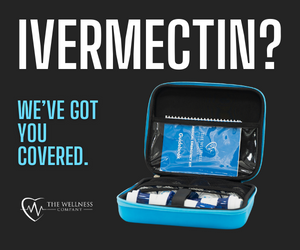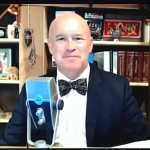Video by chaosonline7
Uploader comment:
“These strange microscopic objects were found in skin lesions of a person who suffers from both Lyme Disease and Morgellons. She also lives directly under a flight path of a major airport and near a 2001 hazmat event involving a (glycol) spill that required bioremediation.
“I will be posting a few additional videos showing the objects glow (mirrors?) when in contact with metal; have moving components (possibly nano) and eject a translucent hexagon from a crystal like cup. Please note the duel/split antennas and the fork tongue serpent on the back sides.”
==
Article by ExoticWeapons[dot]com
Chitin is used in industrial applications for treatments of surfaces. It has been approved by the FDA for use in medicine for drug delivery, bandages, and it helps stop bleeding. It is used in agriculture and water filtration. Dr. Kaplan and his team have developed a way to make cellulose-chitin and cellulose-chitosan through biological synthesis that avoids using harsh chemical extraction methods on crustacean exoskeleton waste.
This quote from a United States patent that was co-invented by Kaplan gives us a good idea of the kinds of various silks that are the focus of most of his team’s patents.
Excerpt:
“United States Patent
6,902,932
Helically organized silk fibroin fiber bundles for matrices in tissue engineering
Inventors: Altman; Gregory H. (Dedham, MA), Kaplan; David L. (Concord, MA), Horan; Rebecca L., Horan; David J. (Westfield, MA) (Westfield, MA)
Assignee: Tissue Regeneration, Inc. (Medford, MA); Trustees of Tufts College (Medford, MA)
Advantageously, the silk-fiber based matrix is comprised solely of silk. Types and sources of silk include the following: silks from silkworms, such as Bombyx mori and related species; silks from spiders, such as Nephila clavipes; silks from genetically engineered bacteria, yeast mammalian cells, insect cells, and transgenic plants and animals; silks obtained from cultured cells from silkworms or spiders; native silks; cloned full or partial sequences of native silks; and silks obtained from synthetic genes.”
Another United States patent of Kaplan’s, #7,674,882, was funded by the Air Force and the National Institutes of Health and is a method for the production of electrospun, nano-scale, silk fibers. And, Kaplan’s U.S. patent #7,635,755 is funded by the Air Force (subcontract from Foster Miller), the National Institutes of Health, and the National Science Foundation. This patent uses transgenic, spider silk fibroin for fibers, threads, hydrogels, and can be used for as scaffolds for “organ repair replacement” or “regeneration”
These scaffolds can be used in many parts of the body “including but are not limited to, spine disc, cranial tissue, dura, nerve tissue, liver, pancreas, kidney, bladder, spleen, cardiac muscle, skeletal muscle, tendons, ligaments and breast tissues.” Metalized spider silk is ten times stronger and could be potentially used for super tendons and super physical strength for super soldiers.
DARPA, the United States Army, the United States Air Force, the National Science Foundation, the National Institutes of Health, and other agencies funded much of this research through the University of Illinois, Tufts University, Massachusetts Institute of Technology, Boston University, and other universities.
It may be that most of these inventions are only used in consensual medical applications or for other legitimate purposes, but knowing that the Air Force and the National Institutes of Health have an proprietary interest in spider silks developed for radar chaff that uses spider silks from transgenic goats that were invented and are owned by the Army is disturbing.
These fibers can used in electronics or electro-magnetically resonated. From a Tufts University article, “Implantable Silk Metamaterials Could Advance Biomedicine, Biosensing,” one can read that David Kaplan and Fiorenzo Omenetto are creating interesting devices —
“Small Antennas Act as One
The researchers sprayed gold-based metamaterial structures directly on pre-made silk films with micro-fabricated stencils using a shadow mask evaporation technique. Spraying the metamaterial onto the flexible silk films created a composite so pliable that it could be wrapped into small, capsule-like cylinders. . . .
According to Fiorenzo Omenetto, the research team likens the concept to “a very peculiar kind of antenna–actually, a lot of small antennas that behave as one. The silk metamaterial composite is sensitive to the dieletric properties of the silk substrate and can monitor the interaction between the silk and the local environment. For example, the metamaterial might signal changes in a bioreactive silk substrate that has been doped with proteins or enzymes.” (italics added, ed.)
Spider webs could possibly conduct an electrical current through ionic conductivity when wet, and certain parasites in the animal world have been able to create or control certain behaviors in their hosts.
According to this United States patent, “Electrospun carbon nanotube reinforced silk fibers,”
#20070082197 — when spider silks are re-inforced and electro-spun with carbon nanotubes, spider silks can have a “function of controlled level of electrical conductivity” and be used as “electrodes for brain/machine interfaces and numerous other applications including, but not limited to neuron regeneration.”
Factor in that present day communication systems can wirelessly send electro-magnetic signals to pretty much any point or area on earth, even if you have to hop those signals from node to node. It has been demonstrated that carbon nanotubes can receive radio signals.
There are two more patents that are interesting that have to do with radar chaff and silk fibroins. The inventors are Stevens and Sturm. One of their methods is to take a spider silk and coat it with aluminum. The assignee is Alliant Defense Electronic Systems. Here are their patents —
Metal-coated substrate articles responsive to electromagnetic radiation, and method of making and using the same
Method of obscuring the location of a radiation-detectable object in a warfare theatre
There is a statement in each of these patents that is telling in regards to spider silk chaff. They state that spider silks will degrade over time from ultraviolet radiation. They also state that silk in quite flame resistant. Chemtrail activists have noticed that the webs that fall from the sky seem to eventually disappear over time in the sunlight. Morgellons sufferers have noticed that some of the fibers coming out of them are hard to burn. Excerpted from the patents above —
“Silk is also a natural protein. The majority of commercial silk is obtained from the cocoons of silkworm caterpillars, although in a few select applications, silk from spider webs is used. Silk is a hygroscopic material that is quite flame resistant. It is tougher than cotton, and has a strength similar to that of nylon or pure iron of equivalent weight. Like wool, silk is very elastic. Though not as sensitive to mildew and mold as the other materials in this category, silk is very UV sensitive, being adversely affected after only a few months of exposure.” (italics added, ed.)
Stevens and Sturm further discuss the advantages of developing a radar chaff from spider silks in this passage:
“In this respect, the persistence of aluminized glass fibers after settling to the ground and the perception of respiratory or digestive hazards of these materials has limited the open air dissemination of chaff for testing and training. Ranchers and environmentalists, particularly in the midwestern U.S., have objected to chaff because it is carried uncontrollably by the wind and settles on populated areas or on land grazed by wildlife and livestock. Additionally, the United States FAA has experienced difficulties in monitoring air traffic because of the electromagnetic noise associated with drifting chaff.
It would therefore be a substantial advance in the art to provide a chaff material which variously is characterized by a reduced settling rate and increased hang time, as compared with conventional chaff materials, overcomes the persistence of adverse electrical characteristics which is a major disadvantage of conventional chaff materials, and is of enhanced environmentally acceptability in relation to conventional chaff materials”
Though Alliant Defense is obviously a military contractor and the assignee on the patents, nowhere on the Stevens or Strum patents is the government listed as having an financial interest in these patents. The military does not own the patents (like the Army, spider/goat patent), and there is nothing in the patents about being able to add a drug, vaccine, sedative, gene, germ or other substance to the coating of these fibers.
But, in the Kaplan and Chunmei patent #3 listed above, “Method for forming Inorganic Coatings,” there is this passage:
“Additionally, the templates of the present invention can be used to deliver any type of molecular compound, such as, pharmacological materials, vitamins, sedatives, steroids, hypnotics, antibiotics, chemotherapeutic agents, prostaglandins, and radiophannaceuticals. The present invention is suitable for delivery the above materials and others including but not limited to proteins, peptides, nucleotides, carbohydrates, simple sugars, cells, genes, anti-thrombotics, anti-metabolics, growth factor inhibitor, growth promoters, anticoagulants, antimitotics, fibrinolytics, anti-inflammatory steroids, and monoclonal antibodies.”
…patents of Kaplan, et. al….state that they can put different kinds of substances inside the coating or inside of the silk fibers themselves during creation.












Add comment